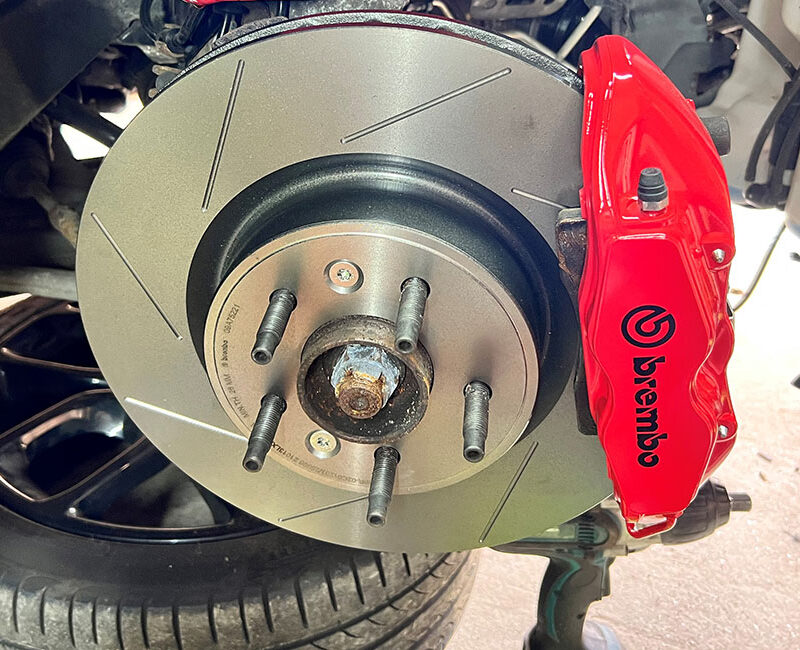Braking Upgrades for Improved Track Day Performance
When it comes to track days, the importance of a car’s braking system cannot be overstated. Effective braking is not just about stopping power; it’s about consistency, reliability, and the confidence it instils in the driver. This comprehensive guide delves into various aspects of braking upgrades essential for enhancing your track day performance, tailored specifically for the UK racing scene.
Understanding the Basics of Braking Systems
In track settings, brakes are subjected to much higher stress than on normal roads. High-speed braking repeatedly can lead to increased wear, reduced performance, and even failure if the system isn’t up to the task. Therefore, upgrading the braking system is pivotal for any track day enthusiast.
Key Components of a Track-Worthy Braking System
- Brake Pads: Opt for high-performance brake pads designed for track use. These pads can handle higher temperatures and provide better stopping power than standard pads.
- Brake Rotors (Discs): Upgrading to slotted or drilled rotors can improve heat dissipation. Larger rotors also provide better braking due to increased leverage against the wheel.
- Brake Callipers: Consider upgrading to callipers with more pistons, which can provide more even and stronger clamping force on the rotors.
- Brake Lines: Replace rubber brake lines with stainless steel braided lines to improve pedal feel and reduce the risk of line swelling under high pressure.
- Brake Fluid: Use high-quality, high-boiling-point brake fluid to prevent fluid boiling, which can lead to brake fade.
- Air Ducts/Cooling: Adding air ducts to direct cool air towards the brakes can help in maintaining optimal operating temperatures.
Choosing the Right Upgrades
- Research: Understand what is available for your specific car model. Not all upgrades are suitable for every vehicle.
- Balance: Ensure that the braking system is balanced with the capabilities of your car. Overly aggressive brakes can upset the car’s handling.
- Compatibility: Check that the new components are compatible with each other and with your car’s existing system.
- Regulations: Be aware of any regulations or restrictions in place at your preferred track venues or in any racing series you may wish to participate in.
Installation and Maintenance
- Professional Installation: For the best results and safety, have upgrades performed by a professional with experience in high-performance braking systems.
- Regular Maintenance: Track use accelerates wear. Regularly inspect pads, rotors, lines, and fluid and replace as needed.
Track Testing and Adjustment
- Initial Testing: Test the upgraded brakes in a safe, controlled environment. Get a feel for the new stopping power and pedal response.
- Fine-Tuning: You may need to adjust your driving style to accommodate the upgraded system. Pay attention to braking points and pedal pressure.
FAQs for Braking Upgrades on Track Days
Q: How often should I replace my brake fluid? A: For regular track users, it’s advisable to change the brake fluid at least once a year, or more often if you notice any decrease in performance.
Q: Can I upgrade just the pads and fluid without changing the rotors and callipers? A: Yes, pad and fluid upgrades can be a cost-effective way to improve performance. However, for the best results, a comprehensive upgrade is recommended.
Q: Do I need to upgrade my brakes if I’m not driving a high-powered car? A: Even less powerful cars can benefit from brake upgrades, as they improve safety and performance under the high-stress conditions of track driving.
Q: Are there any drawbacks to track-focused brake upgrades? A: High-performance brake systems can sometimes be less effective at lower temperatures and may produce more noise and dust than standard brakes.
Q: How do brake upgrades affect my car’s ABS system? A: Quality upgrades should maintain the functionality of your ABS system. It’s important to ensure compatibility during the selection process.
In summary, upgrading the braking system is a crucial step in preparing a car for track days. It not only enhances safety but also improves the overall driving experience, allowing for later braking and more confidence at high speeds. Remember, a good braking system is as important as engine power in the world of track driving – it allows you to go fast, knowing that you have the means to slow down effectively when needed.

